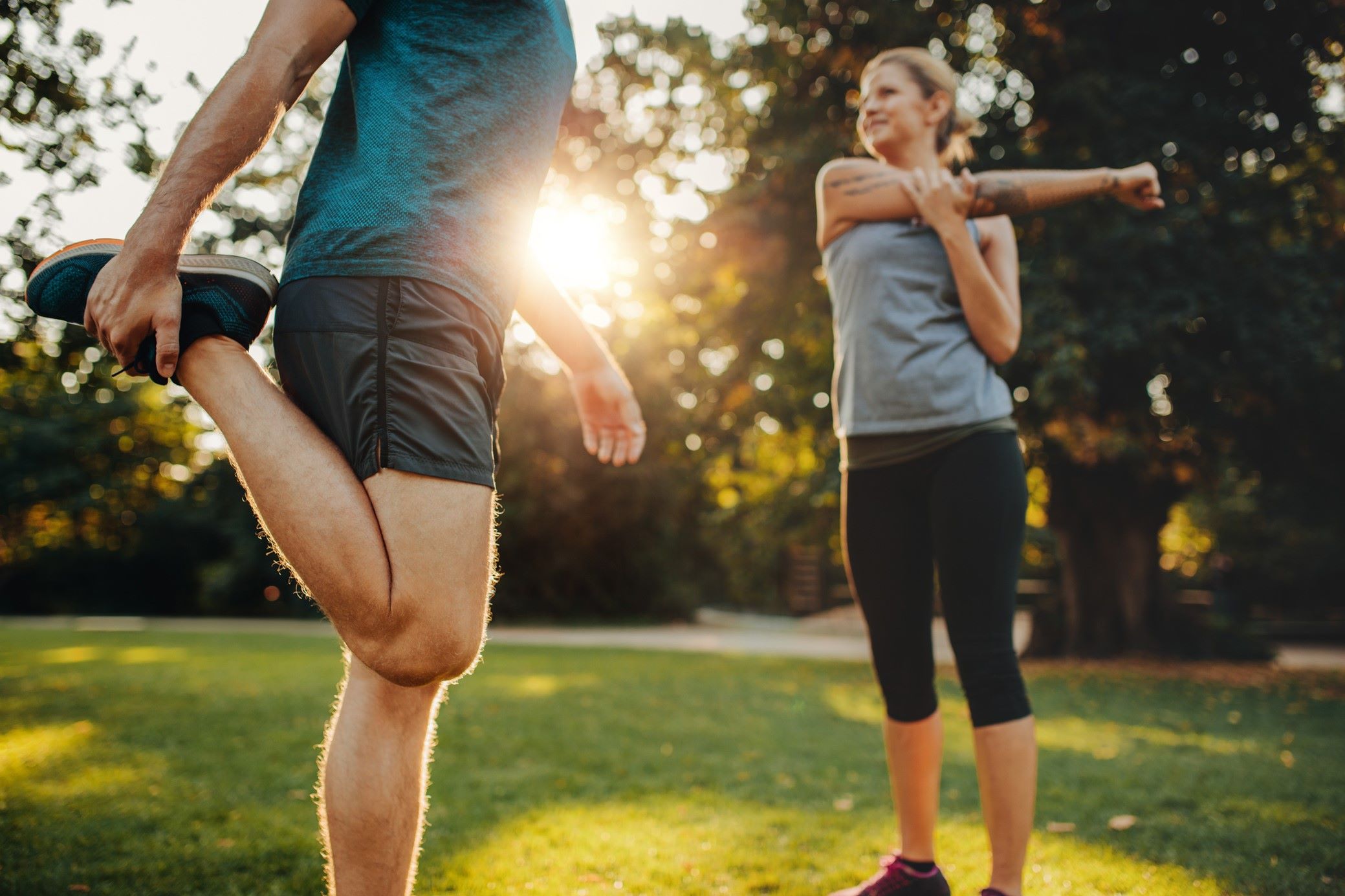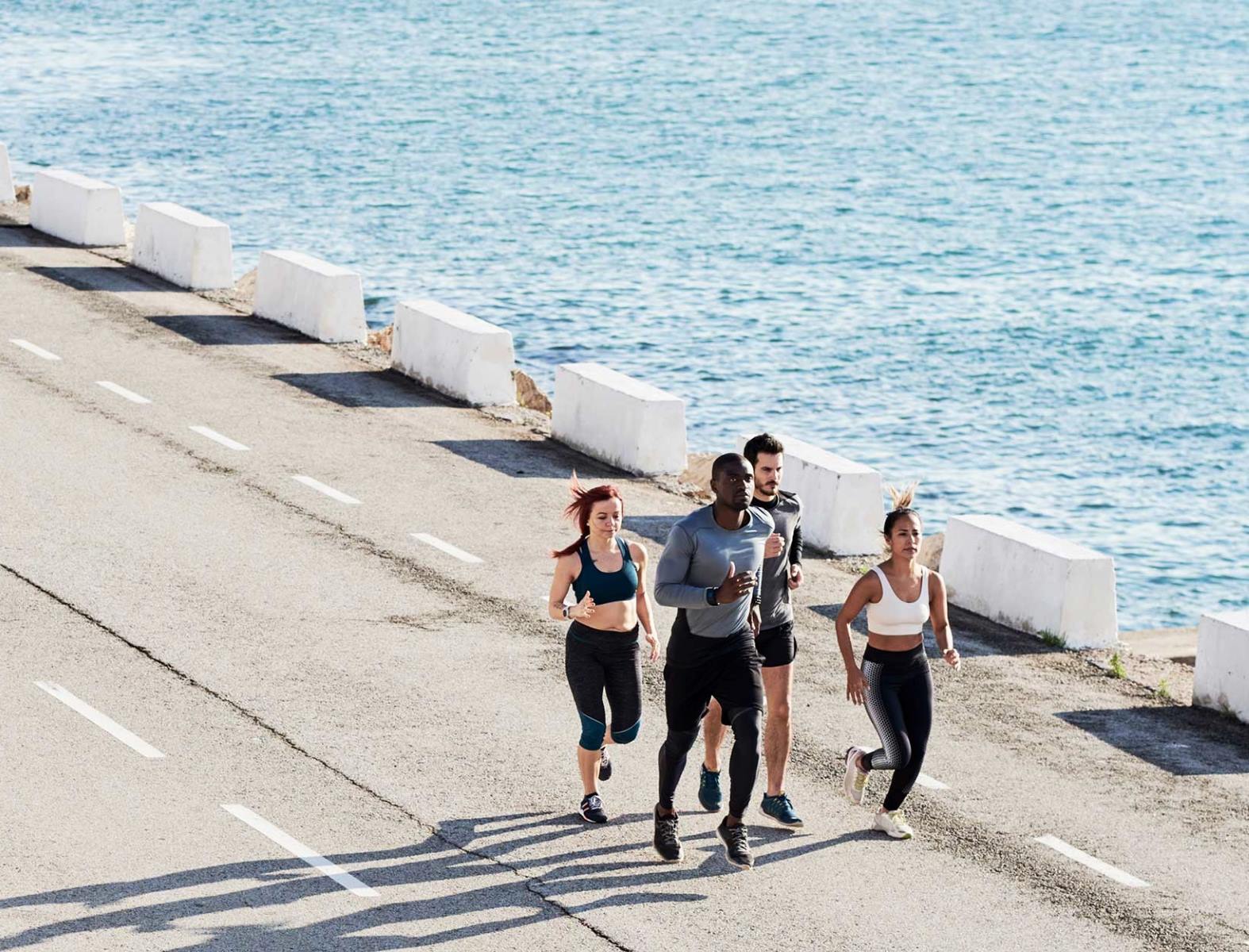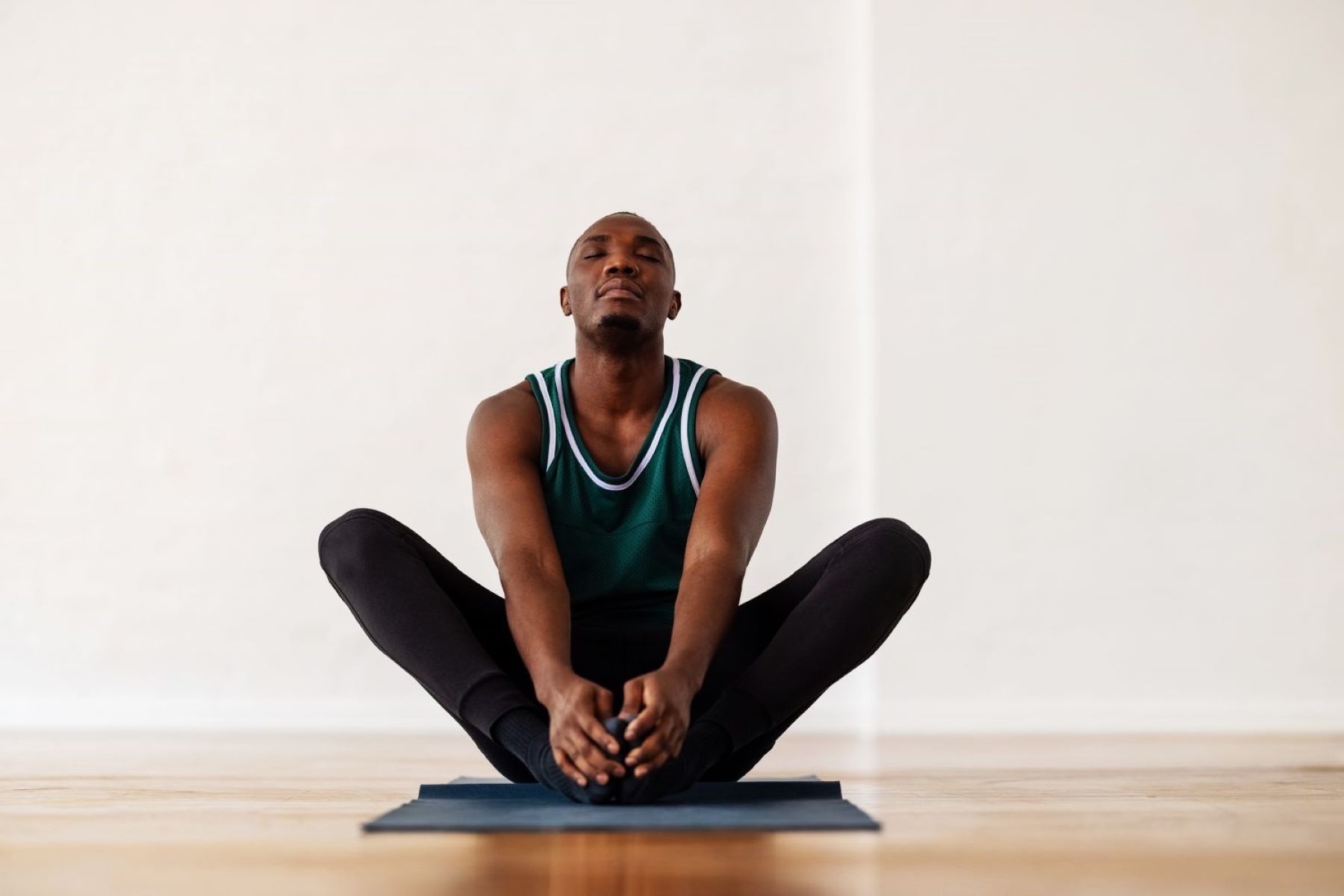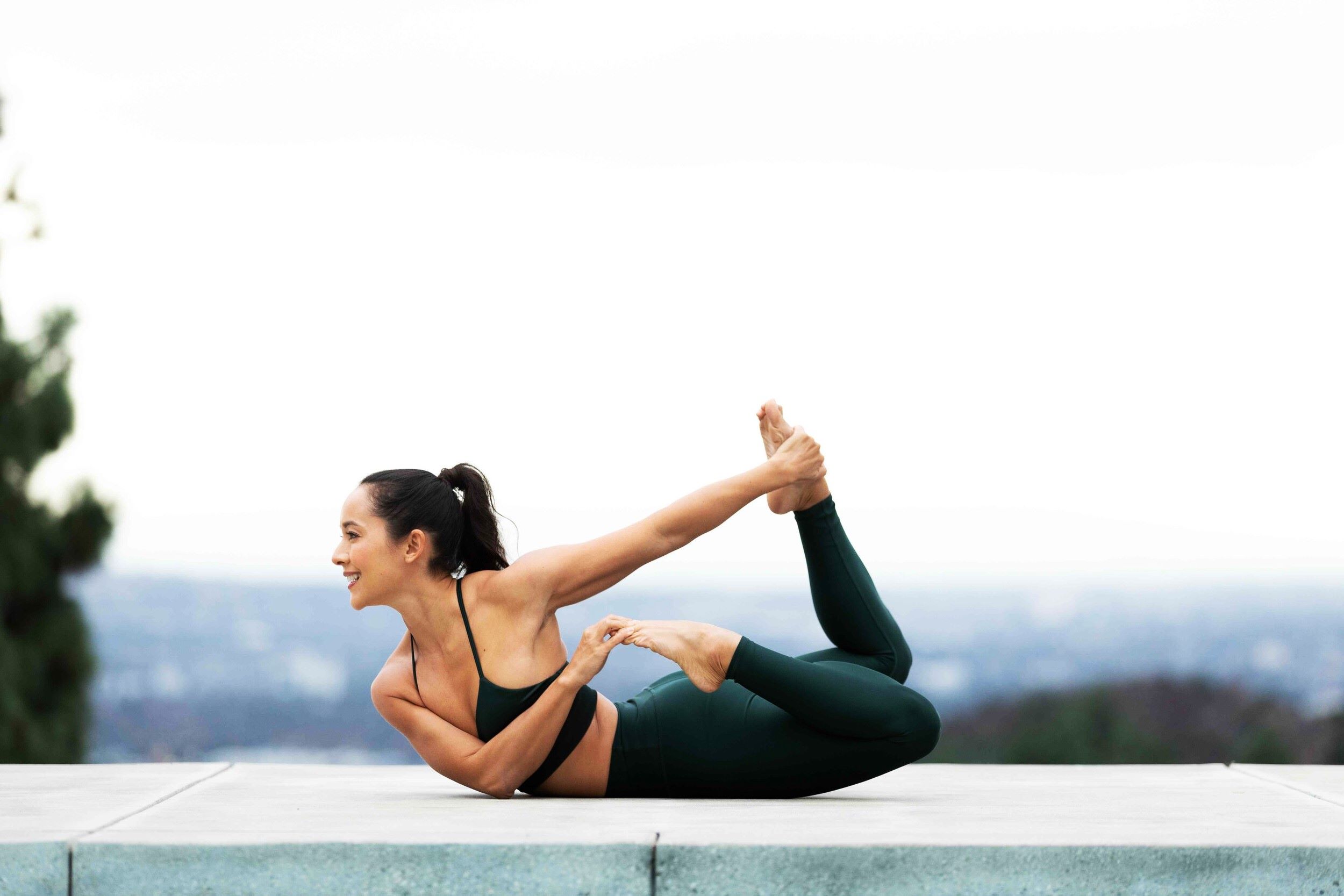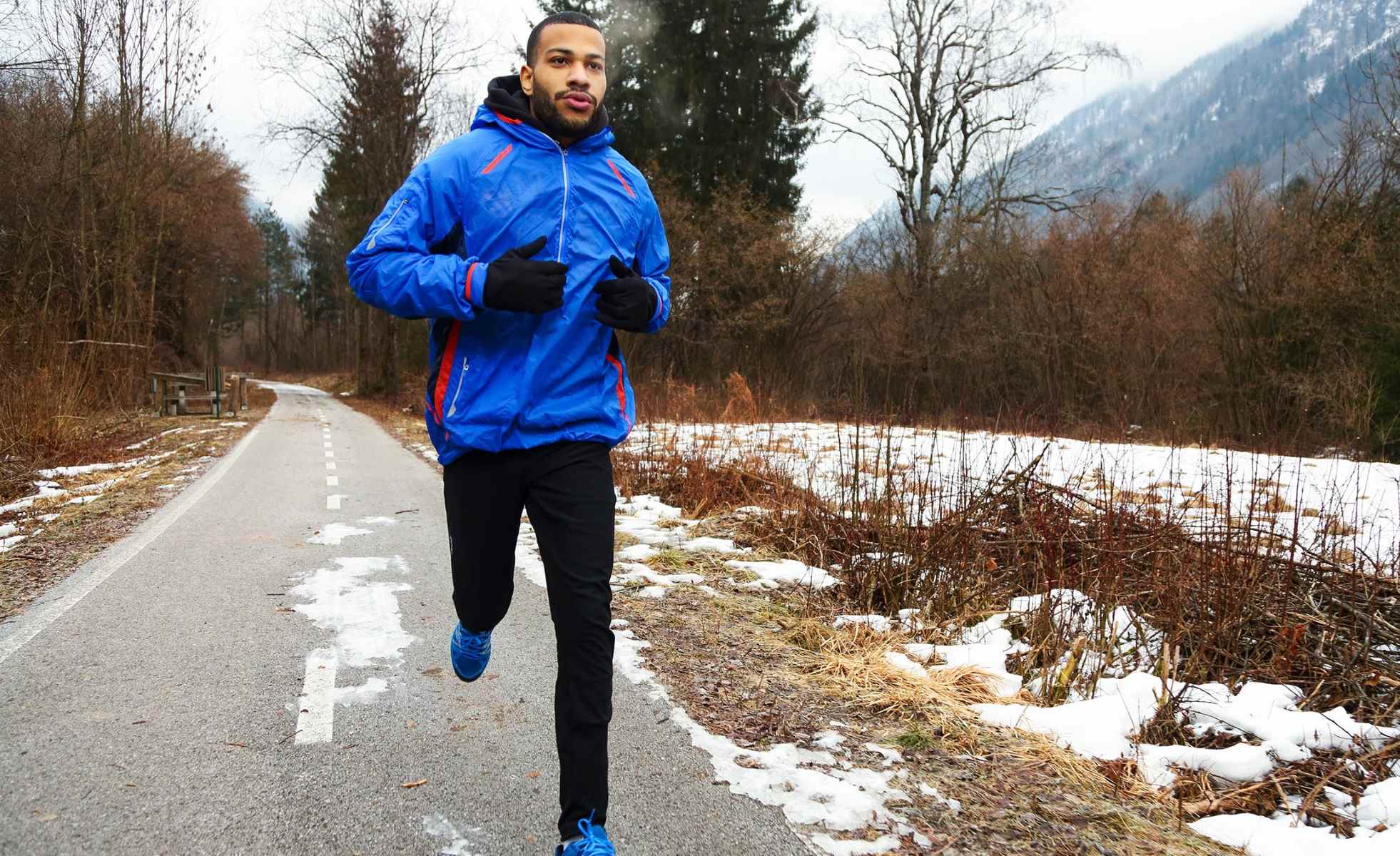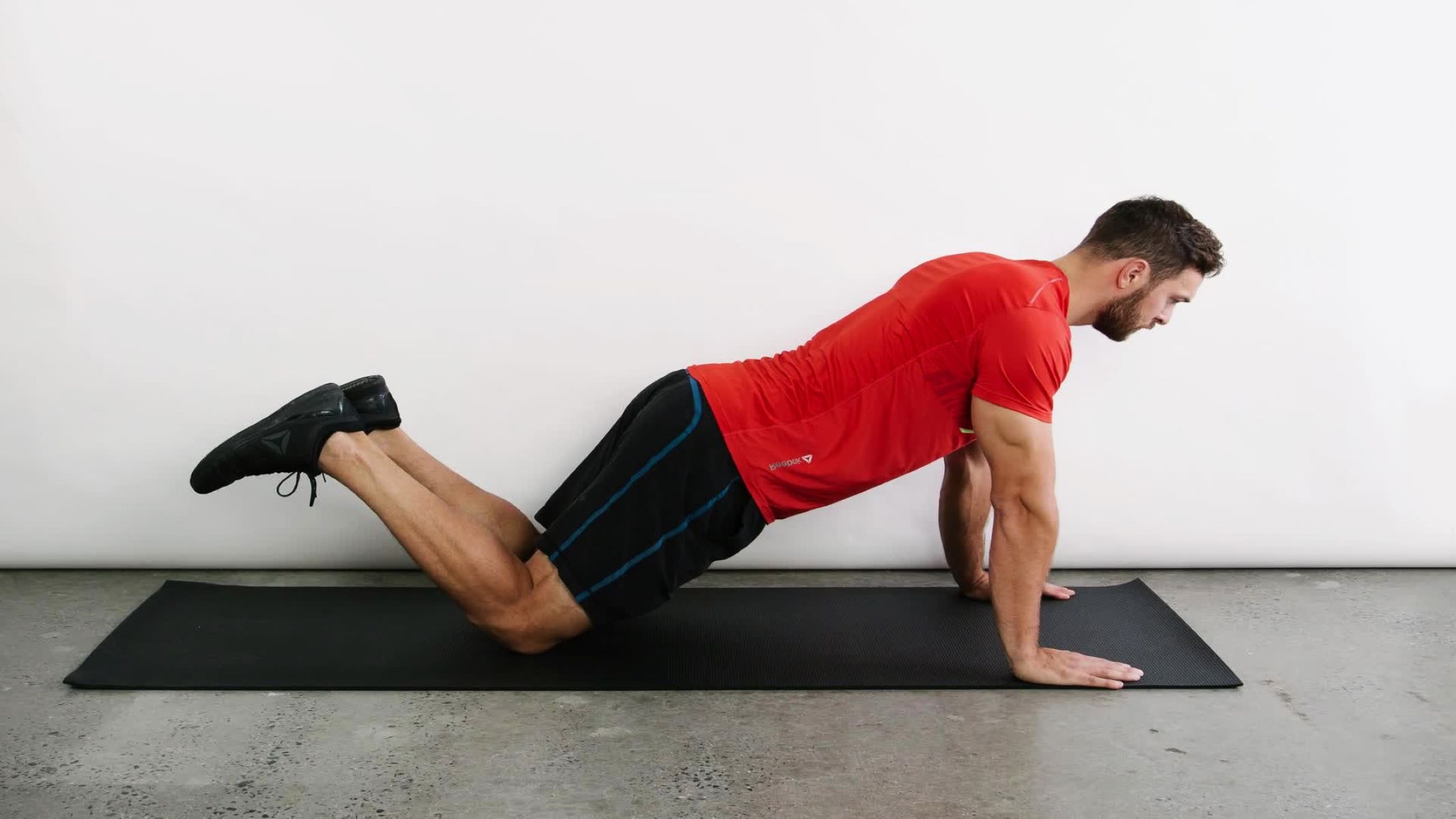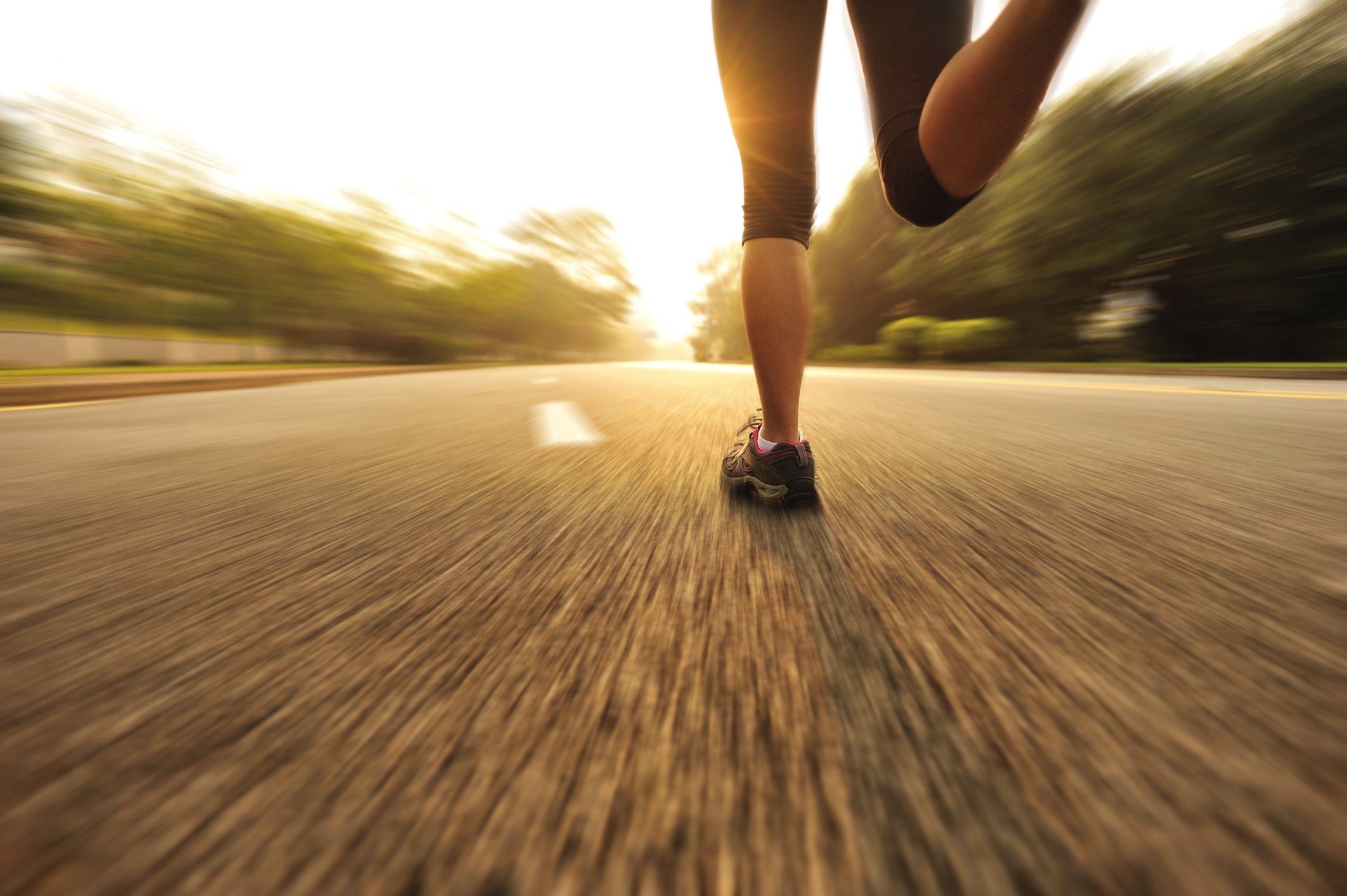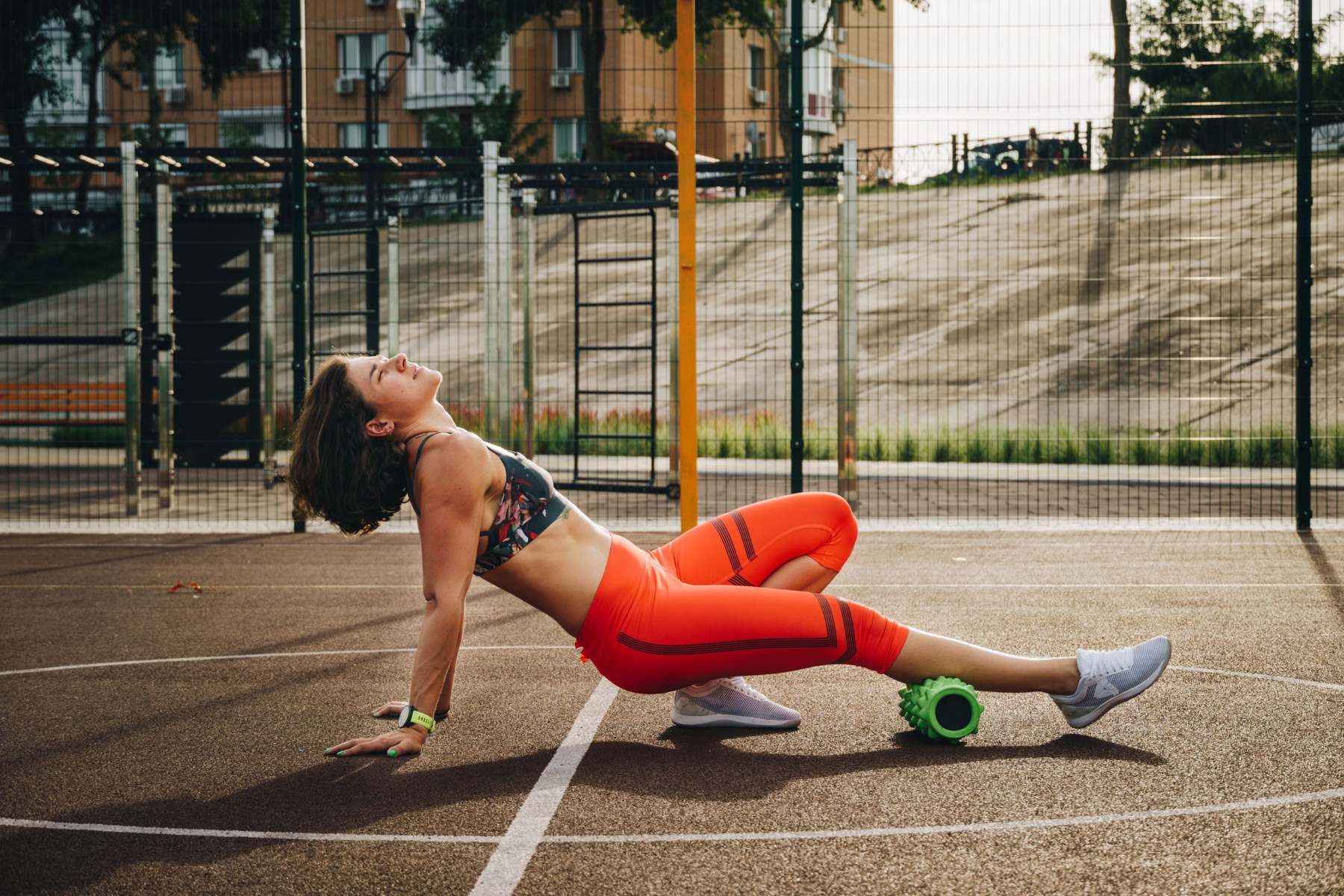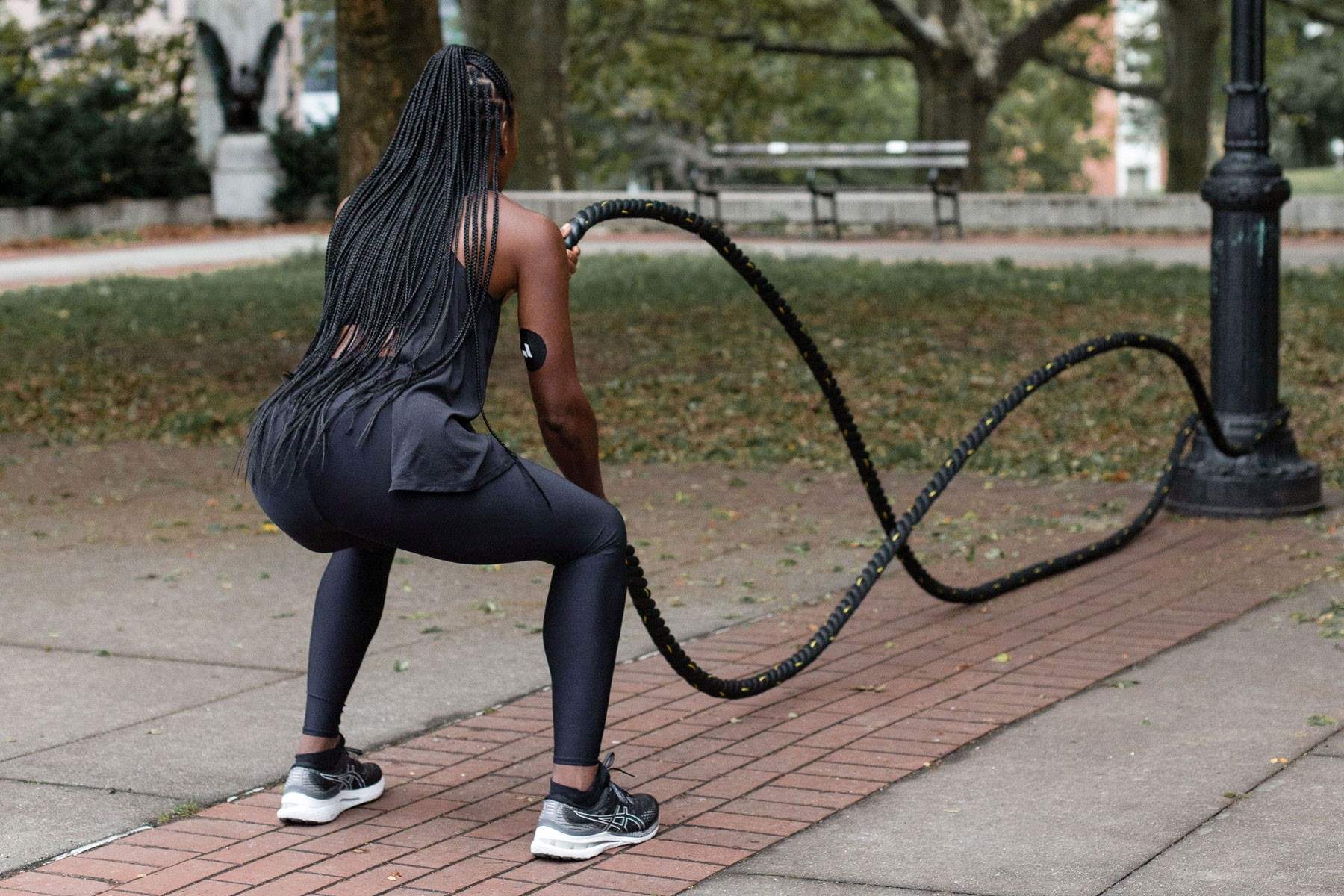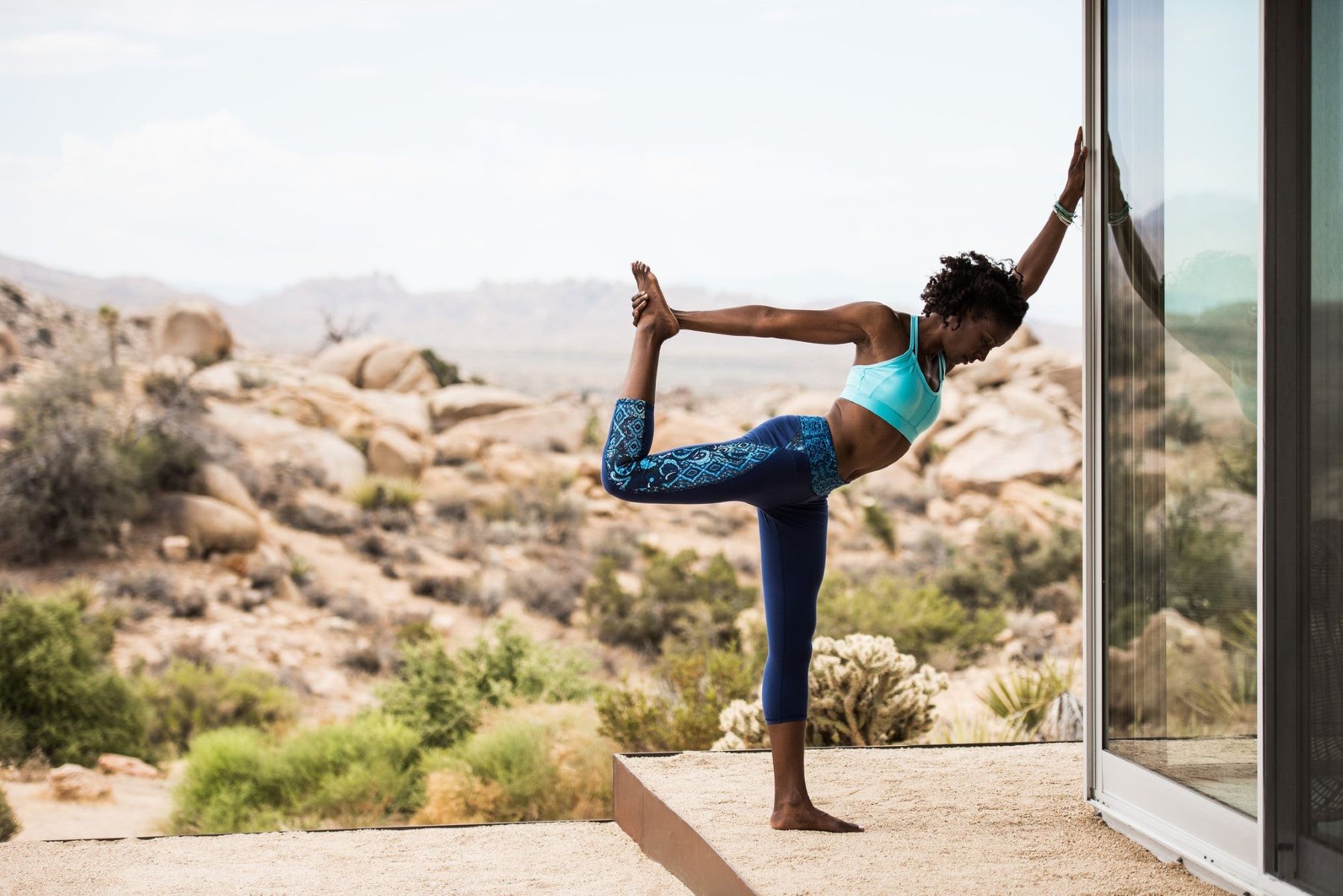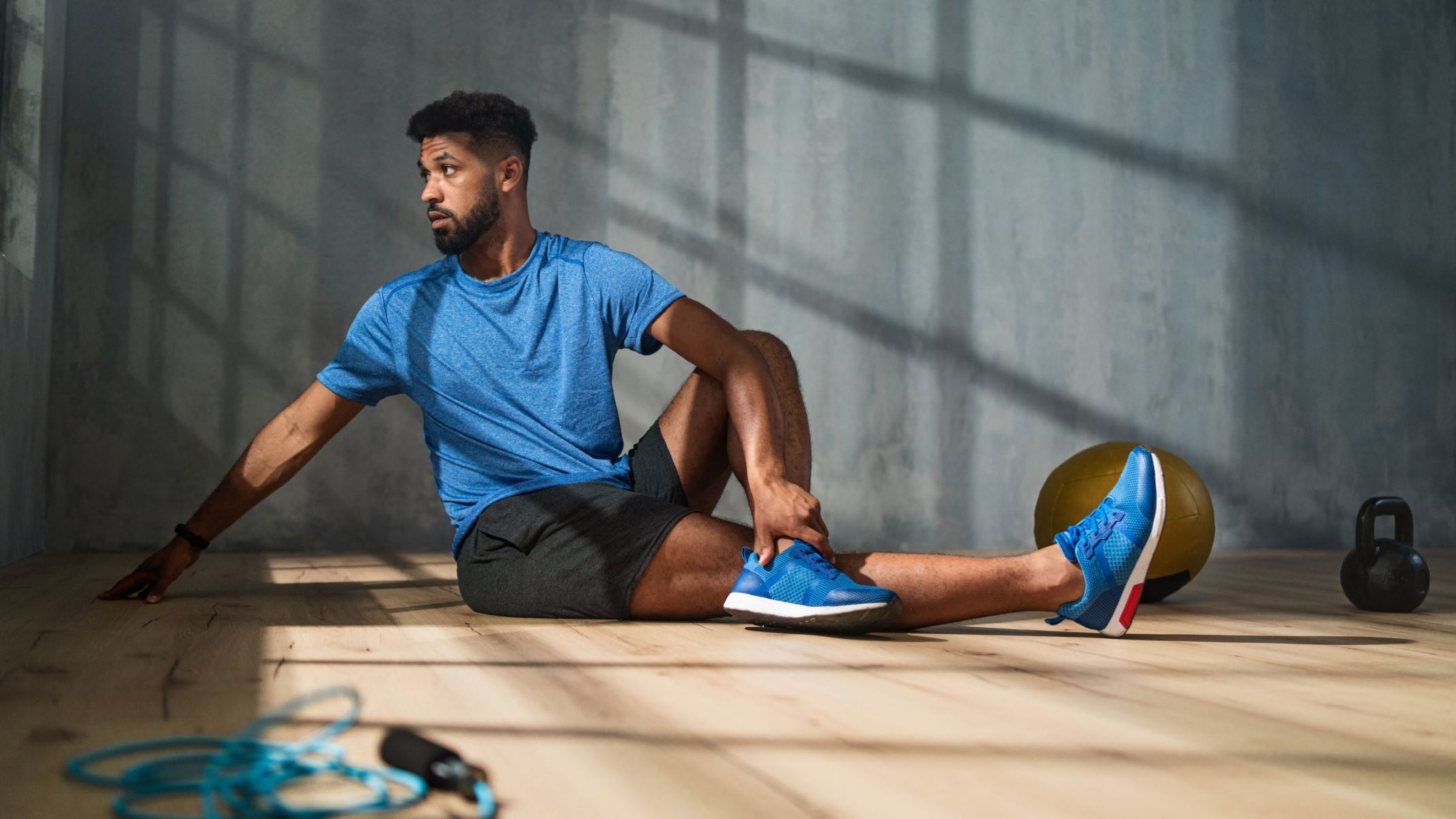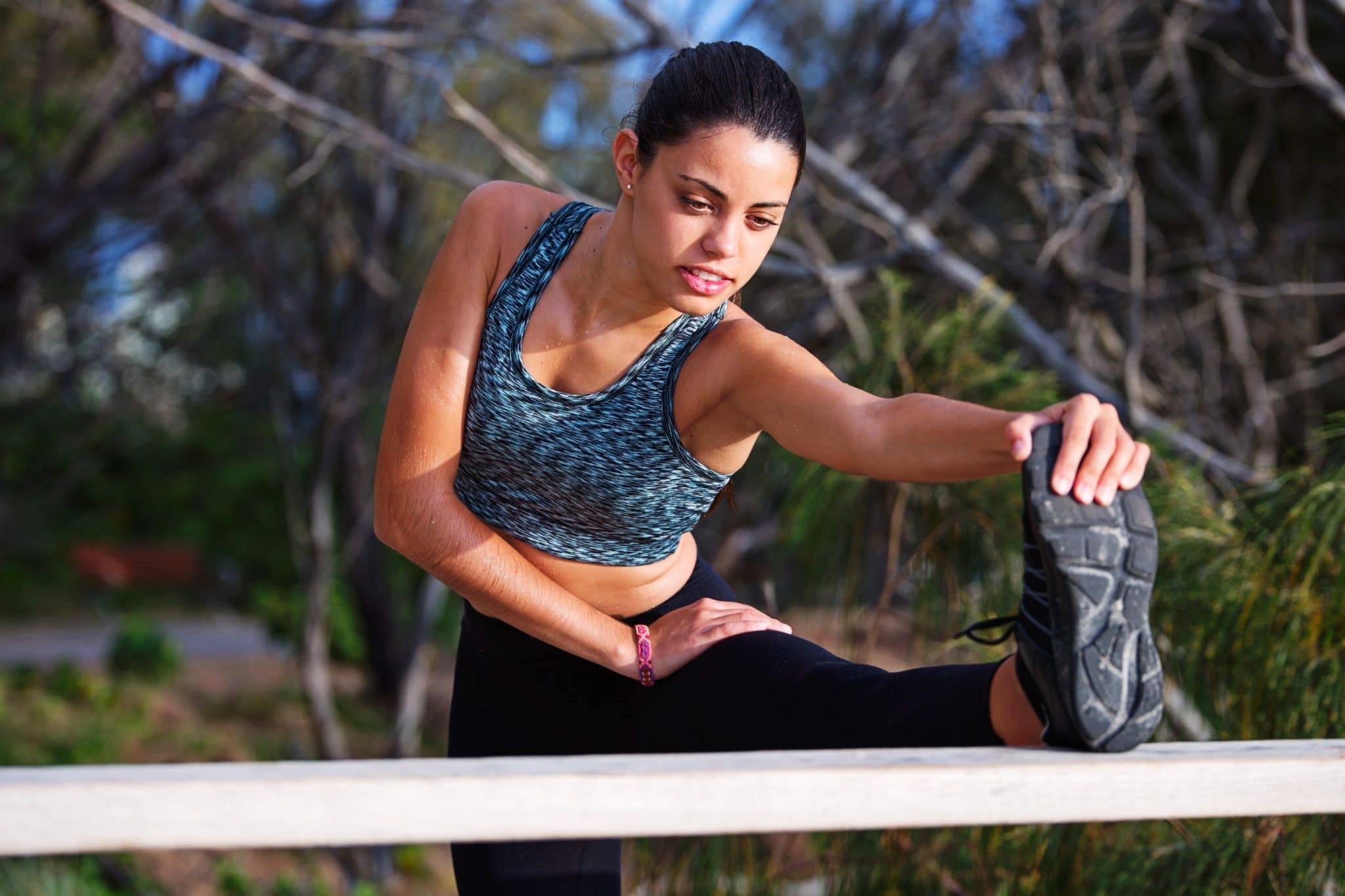Home>Health & Nutrition>Recovery>Add These Stretches To Your Cool Down Routine After Running


Recovery
Add These Stretches To Your Cool Down Routine After Running
Published: February 29, 2024
Enhance your post-run recovery with these essential stretches. Add them to your cool down routine for improved flexibility and reduced muscle soreness.
(Many of the links in this article redirect to a specific reviewed product. Your purchase of these products through affiliate links helps to generate commission for Therunningadvisor.com, at no extra cost. Learn more)
Table of Contents
Importance of a Cool Down Routine
After a vigorous running session, it's tempting to head straight for the shower or collapse onto the couch. However, taking the time to incorporate a proper cool down routine into your post-run ritual can make a world of difference in how your body recovers and performs. The cool down is often overlooked, yet it plays a crucial role in preventing injury, reducing muscle soreness, and promoting flexibility.
When you engage in intense physical activity like running, your muscles undergo a significant amount of stress. A cool down routine helps to gradually bring your heart rate and breathing back to their resting state, allowing your body to transition from a state of exertion to a state of relaxation. This gradual transition can help prevent dizziness or fainting that may occur when abruptly stopping intense exercise.
Moreover, a well-structured cool down routine aids in preventing the buildup of lactic acid in the muscles. Lactic acid is a byproduct of intense exercise and can contribute to muscle soreness and fatigue. By incorporating gentle movements and stretches during the cool down, you can assist your body in flushing out this lactic acid, thereby reducing post-run discomfort.
Additionally, a cool down routine promotes flexibility by elongating the muscles that have been contracted during the run. This can help improve your overall range of motion and prevent the muscles from becoming tight and prone to injury. By incorporating stretches targeting specific muscle groups, you can maintain and enhance your flexibility, which is essential for optimal performance and injury prevention in the long run.
In essence, a cool down routine is not just a way to wind down after a run; it is a strategic approach to aiding your body in its recovery process. By taking the time to cool down properly, you can minimize the risk of injury, alleviate muscle soreness, and enhance your overall flexibility, setting the stage for a more effective and enjoyable running experience.
Hamstring Stretch
The hamstring muscles, located at the back of the thigh, play a pivotal role in running. Engaging in a hamstring stretch as part of your cool down routine can significantly benefit your post-run recovery. This stretch targets the hamstrings, promoting flexibility and reducing the risk of muscle tightness and injury.
To perform a hamstring stretch, start by sitting on the ground with one leg extended straight in front of you and the other leg bent with the foot resting against the inner thigh of the extended leg. Keeping your back straight, gently lean forward from your hips, reaching towards your toes. It's important to focus on keeping your back straight rather than rounding it, as this ensures that the stretch is effectively targeting the hamstrings. Hold the stretch for 15-30 seconds, feeling a gentle pull along the back of your extended leg, and then switch to the other leg.
This stretch can also be performed while standing. Simply extend one leg in front of you with a slight bend in the knee, and then hinge forward from your hips, reaching towards your toes. Again, maintaining a straight back is crucial for maximizing the effectiveness of the stretch.
By incorporating the hamstring stretch into your cool down routine, you allow the muscles at the back of your thighs to elongate and relax after the exertion of running. This can help alleviate muscle tightness and reduce the risk of strains or pulls in the hamstring muscles. Additionally, regular stretching of the hamstrings can contribute to improved overall flexibility, which is essential for maintaining optimal running form and preventing injuries.
Incorporating the hamstring stretch into your cool down routine not only aids in the immediate relief of muscle tension but also contributes to the long-term health and performance of your muscles. By dedicating a few minutes to this simple yet effective stretch, you can support your body in its post-run recovery, ultimately enhancing your running experience.
Quadriceps Stretch
The quadriceps, a group of four muscles located at the front of the thigh, are extensively engaged during running, making the quadriceps stretch an essential component of a comprehensive cool down routine. This stretch specifically targets the quadriceps, aiding in their relaxation and promoting flexibility, which are crucial for preventing muscle tightness and potential injury.
To perform a quadriceps stretch, start by standing upright and maintaining your balance. Gently bend one knee, bringing your foot towards your glutes. Using your hand, grasp the ankle of the bent leg, ensuring that your knees remain close together. Once in this position, gently pull your ankle towards your glutes, feeling a stretch along the front of your thigh. It's important to keep your torso upright and avoid arching your back excessively to maximize the effectiveness of the stretch. Hold this position for 15-30 seconds, feeling the tension release in your quadriceps, and then switch to the other leg.
Another variation of the quadriceps stretch involves lying on your side. Begin by lying on one side and bending your top leg, bringing your foot towards your glutes. Using your hand, gently grasp the ankle of the bent leg and pull it towards your glutes, feeling the stretch along the front of your thigh. Again, maintaining proper alignment and avoiding excessive arching of the back is crucial for targeting the quadriceps effectively. Hold the stretch for 15-30 seconds before switching to the other leg.
Incorporating the quadriceps stretch into your cool down routine can yield numerous benefits. By targeting the quadriceps, this stretch helps alleviate any tightness or tension that may have developed during the run, promoting a sense of relaxation and relief in the muscles. Additionally, regular stretching of the quadriceps can contribute to improved flexibility, which is essential for maintaining optimal running form and preventing injuries related to muscle tightness or imbalance.
Furthermore, the quadriceps stretch aids in promoting blood flow to the targeted muscles, facilitating the removal of metabolic waste products and enhancing the delivery of oxygen and nutrients to aid in the recovery process. This can help reduce muscle soreness and expedite the overall recovery of the quadriceps, allowing for a quicker return to peak performance.
In essence, the quadriceps stretch is a valuable addition to your cool down routine, offering immediate relief from muscle tension while contributing to the long-term flexibility and health of the quadriceps. By dedicating a few minutes to this stretch after each run, you can support your muscles in their recovery, ultimately enhancing your running experience and minimizing the risk of potential injuries.
Calf Stretch
The calf muscles, comprising the gastrocnemius and soleus muscles, are extensively engaged during running, making the calf stretch an integral component of a comprehensive cool down routine. This stretch specifically targets the calf muscles, aiding in their relaxation and promoting flexibility, which are crucial for preventing muscle tightness and potential injury.
To perform a calf stretch, start by standing facing a wall, with your hands resting on the wall for support. Take a step back with one leg, keeping it straight and ensuring that the heel is planted firmly on the ground. The other leg should be positioned forward with a slight bend in the knee. Keeping both feet flat on the ground, lean forward towards the wall, allowing the back leg to elongate and the calf muscle to stretch. You should feel a gentle pull along the back of the lower leg. Hold this position for 15-30 seconds, focusing on breathing deeply and allowing the tension in the calf muscle to release, and then switch to the other leg.
Another variation of the calf stretch involves utilizing a step or curb. Begin by standing on the edge of a step or curb with the balls of your feet on the step and your heels extending off the edge. Gently lower your heels below the level of the step, feeling the stretch in your calf muscles. Hold this position for 15-30 seconds, allowing the calf muscles to relax and elongate, and then return to the starting position.
Incorporating the calf stretch into your cool down routine can yield numerous benefits. By targeting the calf muscles, this stretch helps alleviate any tightness or tension that may have developed during the run, promoting a sense of relaxation and relief in the muscles. Additionally, regular stretching of the calf muscles can contribute to improved flexibility, which is essential for maintaining optimal running form and preventing injuries related to muscle tightness or imbalance.
Furthermore, the calf stretch aids in promoting blood flow to the targeted muscles, facilitating the removal of metabolic waste products and enhancing the delivery of oxygen and nutrients to aid in the recovery process. This can help reduce muscle soreness and expedite the overall recovery of the calf muscles, allowing for a quicker return to peak performance.
In essence, the calf stretch is a valuable addition to your cool down routine, offering immediate relief from muscle tension while contributing to the long-term flexibility and health of the calf muscles. By dedicating a few minutes to this stretch after each run, you can support your muscles in their recovery, ultimately enhancing your running experience and minimizing the risk of potential injuries.
Hip Flexor Stretch
The hip flexors, a group of muscles located at the front of the hip and upper thigh, play a crucial role in running, as they are responsible for lifting the knees and generating power during each stride. Engaging in a hip flexor stretch as part of your cool down routine can significantly benefit your post-run recovery. This stretch specifically targets the hip flexors, aiding in their relaxation and promoting flexibility, which are essential for preventing muscle tightness and potential injury.
To perform a hip flexor stretch, start by assuming a lunge position, with one foot positioned forward and the knee bent at a 90-degree angle, and the other leg extended straight behind you. Keeping your torso upright and aligned with your hips, gently shift your weight forward, allowing your hips to descend towards the ground. You should feel a stretch in the front of the extended hip and thigh. It's important to maintain proper alignment and avoid overarching the lower back to maximize the effectiveness of the stretch. Hold this position for 15-30 seconds, feeling the tension release in your hip flexors, and then switch to the other leg.
Another variation of the hip flexor stretch involves performing the stretch while standing. Begin by standing upright and taking a step back with one leg, allowing the heel to lift off the ground. Keeping the back leg straight, gently tilt your pelvis forward, feeling the stretch in the front of the hip. Hold this position for 15-30 seconds before switching to the other leg.
Incorporating the hip flexor stretch into your cool down routine can yield numerous benefits. By targeting the hip flexors, this stretch helps alleviate any tightness or tension that may have developed during the run, promoting a sense of relaxation and relief in the muscles. Additionally, regular stretching of the hip flexors can contribute to improved flexibility, which is essential for maintaining optimal running form and preventing injuries related to muscle tightness or imbalance.
Furthermore, the hip flexor stretch aids in promoting blood flow to the targeted muscles, facilitating the removal of metabolic waste products and enhancing the delivery of oxygen and nutrients to aid in the recovery process. This can help reduce muscle soreness and expedite the overall recovery of the hip flexors, allowing for a quicker return to peak performance.
In essence, the hip flexor stretch is a valuable addition to your cool down routine, offering immediate relief from muscle tension while contributing to the long-term flexibility and health of the hip flexors. By dedicating a few minutes to this stretch after each run, you can support your muscles in their recovery, ultimately enhancing your running experience and minimizing the risk of potential injuries.
Read more: Is It Necessary To Cool Down After A Run?
IT Band Stretch
The iliotibial (IT) band, a fibrous band of tissue that runs along the outside of the thigh, is a critical structure for runners. Engaging in an IT band stretch as part of your cool down routine can significantly benefit your post-run recovery. This stretch specifically targets the IT band, aiding in its relaxation and promoting flexibility, which are essential for preventing muscle tightness and potential injury.
To perform an IT band stretch, start by standing upright with one foot crossed behind the other. Keeping your back straight and your core engaged, gently lean to the side opposite to the back leg, feeling the stretch along the outer thigh and hip. It's important to maintain proper alignment and avoid leaning forward or backward excessively to maximize the effectiveness of the stretch. Hold this position for 15-30 seconds, feeling the tension release along the IT band, and then switch to the other side.
Another variation of the IT band stretch involves utilizing a foam roller. Begin by lying on your side with the foam roller positioned under the outer thigh of the bottom leg. Using your arms for support and the top leg for stability, gently roll along the outer thigh from the hip to the knee, allowing the foam roller to massage and stretch the IT band. This self-myofascial release technique can help alleviate tightness and tension in the IT band, promoting a sense of relaxation and relief in the muscles.
Incorporating the IT band stretch into your cool down routine can yield numerous benefits. By targeting the IT band, this stretch helps alleviate any tightness or tension that may have developed during the run, promoting a sense of relaxation and relief in the muscles. Additionally, regular stretching and self-myofascial release of the IT band can contribute to improved flexibility, which is essential for maintaining optimal running form and preventing injuries related to IT band tightness or imbalance.
Furthermore, the IT band stretch aids in promoting blood flow to the targeted muscles, facilitating the removal of metabolic waste products and enhancing the delivery of oxygen and nutrients to aid in the recovery process. This can help reduce muscle soreness and expedite the overall recovery of the IT band, allowing for a quicker return to peak performance.
In essence, the IT band stretch is a valuable addition to your cool down routine, offering immediate relief from muscle tension while contributing to the long-term flexibility and health of the IT band. By dedicating a few minutes to this stretch after each run, you can support your muscles in their recovery, ultimately enhancing your running experience and minimizing the risk of potential injuries.
Glute Stretch
The gluteal muscles, encompassing the gluteus maximus, medius, and minimus, are vital for running, providing stability, power, and propulsion with each stride. Incorporating a glute stretch into your post-run cool down routine is essential for promoting muscle relaxation, flexibility, and overall recovery.
To perform a glute stretch, begin by lying on your back with both knees bent and feet flat on the ground. Cross one ankle over the opposite knee, forming a figure-four shape with your legs. Gently lift the foot of the bent leg off the ground, threading your hand through the space between your legs and clasping your hands behind the thigh of the bent leg. With a gentle pull, guide the bent knee towards your chest, feeling the stretch in the gluteal muscles of the crossed leg. Hold this position for 15-30 seconds, allowing the tension in the glutes to release, and then switch to the other leg.
Another variation of the glute stretch involves performing the stretch while standing. Start by standing upright and crossing one ankle over the opposite knee, forming a figure-four shape with your legs. Keeping your back straight and your core engaged, gently hinge forward at the hips, lowering your torso towards the ground. You should feel a stretch in the gluteal muscles of the crossed leg. Hold this position for 15-30 seconds before switching to the other leg.
Incorporating the glute stretch into your cool down routine offers numerous benefits. By targeting the gluteal muscles, this stretch helps alleviate any tightness or tension that may have developed during the run, promoting a sense of relaxation and relief in the muscles. Additionally, regular stretching of the glutes can contribute to improved flexibility, which is essential for maintaining optimal running form and preventing injuries related to muscle tightness or imbalance.
Furthermore, the glute stretch aids in promoting blood flow to the targeted muscles, facilitating the removal of metabolic waste products and enhancing the delivery of oxygen and nutrients to aid in the recovery process. This can help reduce muscle soreness and expedite the overall recovery of the gluteal muscles, allowing for a quicker return to peak performance.
In essence, the glute stretch is a valuable addition to your cool down routine, offering immediate relief from muscle tension while contributing to the long-term flexibility and health of the gluteal muscles. By dedicating a few minutes to this stretch after each run, you can support your muscles in their recovery, ultimately enhancing your running experience and minimizing the risk of potential injuries.
Cool Down Routine Tips
-
Gradual Transition: After completing your run, it's crucial to allow for a gradual transition from high-intensity activity to a state of relaxation. Abruptly stopping intense exercise can lead to dizziness or fainting, so incorporating gentle movements and stretches into your cool down routine can help bring your heart rate and breathing back to a resting state.
-
Hydration: Replenishing lost fluids is essential for aiding the body's recovery process. Ensure that you hydrate adequately after your run to replace the fluids lost through sweat. Opt for water or a sports drink to restore electrolyte balance and support muscle function.
-
Nutrition: Consuming a balanced post-run snack or meal that includes carbohydrates and protein can help replenish glycogen stores and support muscle repair. Including nutrient-rich foods in your post-run nutrition can contribute to a more effective recovery.
-
Foam Rolling: Incorporating foam rolling into your cool down routine can help release muscle tension and improve flexibility. Targeting specific muscle groups with a foam roller can aid in alleviating tightness and promoting overall muscle recovery.
-
Mindful Breathing: Practicing deep, mindful breathing during your cool down routine can help facilitate relaxation and reduce stress. Focusing on your breath can also assist in lowering your heart rate and promoting a sense of calmness after your run.
-
Reflect and Stretch: Take a few moments during your cool down to reflect on your run and assess how your body feels. This self-awareness can guide you in identifying areas of tightness or discomfort that may require targeted stretching. Tailoring your stretches based on your body's feedback can enhance the effectiveness of your cool down routine.
-
Incorporate Dynamic Movements: Integrating dynamic movements such as gentle leg swings, arm circles, or walking lunges into your cool down routine can help maintain mobility and prevent stiffness. These movements can also aid in promoting blood flow to the muscles, supporting the recovery process.
-
Listen to Your Body: Pay attention to any signals of discomfort or pain during your cool down routine. It's important to differentiate between the normal sensations of post-exercise fatigue and any potential signs of injury. Adjust your cool down activities based on your body's feedback to ensure a safe and effective recovery.
-
Consistency: Establishing a consistent cool down routine after each run can contribute to long-term benefits in terms of injury prevention, muscle recovery, and overall performance. By making the cool down an integral part of your post-run ritual, you can support your body in its ongoing recovery and adaptation to training.
Incorporating these cool down routine tips into your post-run regimen can enhance the effectiveness of your recovery process, promote overall well-being, and contribute to a more enjoyable and sustainable running experience.

